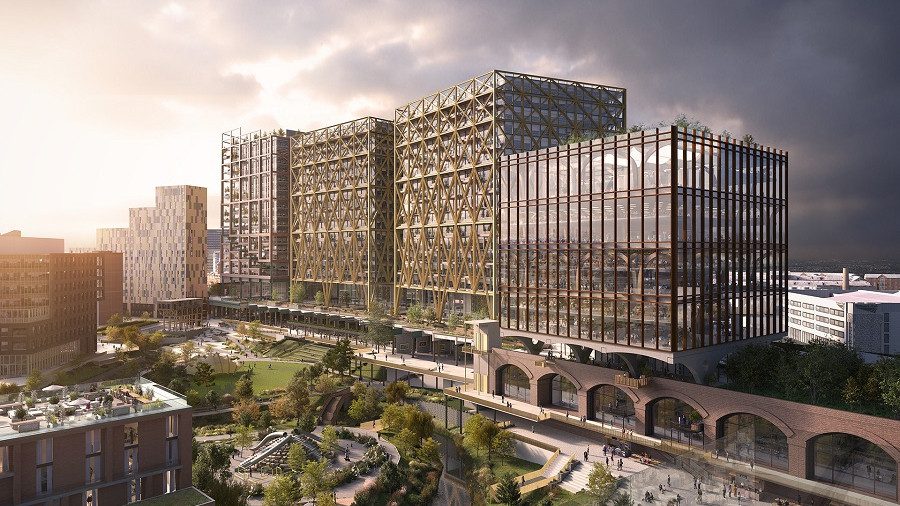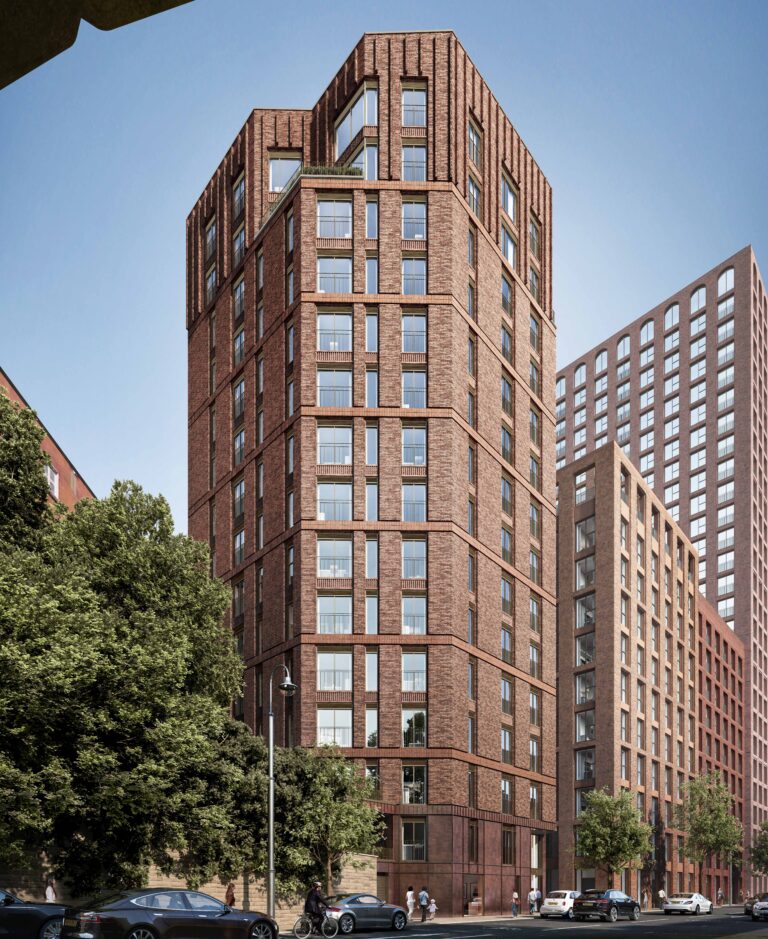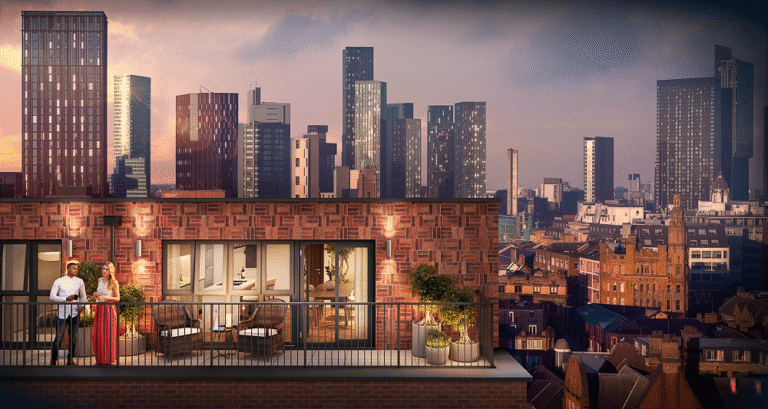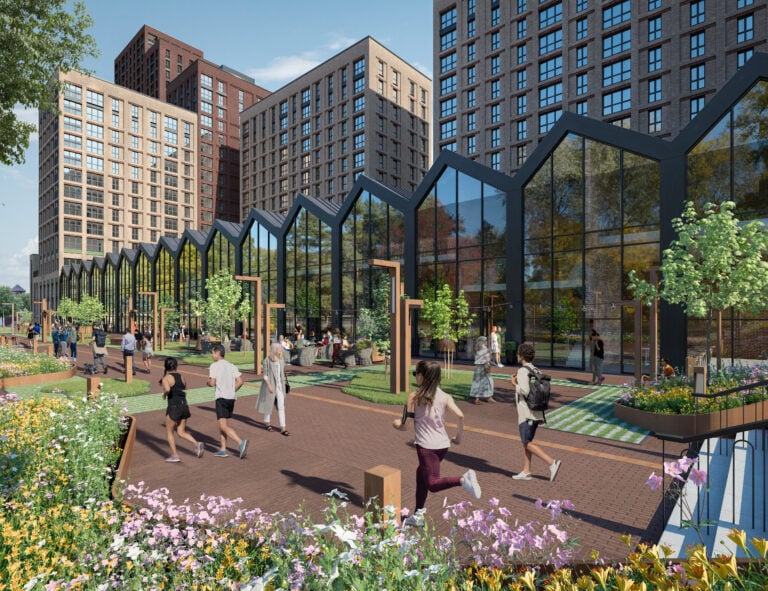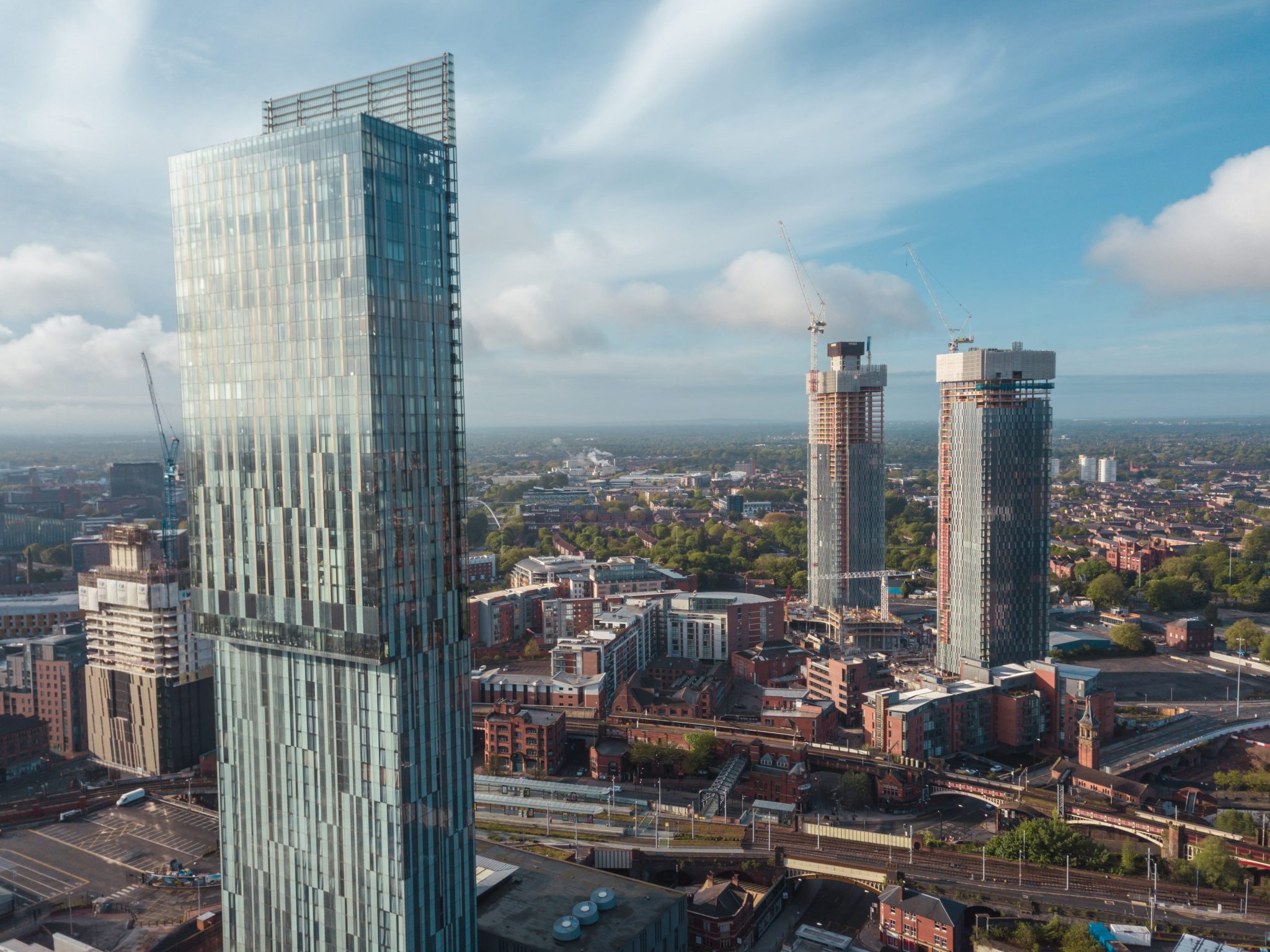A decade ago, the land behind Manchester Piccadilly Station was one of the city’s largest derelict sites. Today, it’s at the heart of one of the UK’s most ambitious regeneration projects.
The Mayfield Regeneration Framework is transforming this 24-acre site into a brand new city-centre neighbourhood of homes, offices, leisure space and the first major public park built in Manchester for more than a century.
A framework for transformation
Manchester City Council approved the Mayfield Strategic Regeneration Framework (SRF) for the redevelopment of the former rail depot and surrounding brownfield land back in 2018. When it is completed, the plan will deliver up to 1,500 new homes and more than 2.3 million sq ft of workspace, plus shops, cafés, as well as a 6.5-acre park along the River Medlock.
The site sits within the M1 postcode, directly behind Piccadilly Station at the city’s eastern gateway. It’s part of a wider regeneration corridor linking Ancoats to the north – already one of Manchester’s biggest success stories – with Ardwick to the south-east, whose redevelopment is already gathering pace. Together, these projects are extending the city centre well beyond the station and reconnecting long-neglected areas to its commercial heart.
According to the council, Mayfield will “bring back into productive use an under-used part of Manchester’s city centre” and create thousands of jobs over the next decade.
Major private investment
The scheme is being delivered by the Mayfield Partnership, a collaboration between Manchester City Council, Transport for Greater Manchester, LCR and developer LandsecU+I. However, after taking full control in 2024, LandsecU+I is now driving the next phase. And, in March 2025, it submitted plans for 879 homes across four buildings and 325,000 sq ft of offices – the project’s biggest stage so far.
Phase one has already seen the completion of the first half of Mayfield Park, which opened in 2022, along with the Pavilion office building. The new phase will expand the park by 40 per cent and add riverside walkways, creating what the developer calls “a place where business, community and nature meet at the heart of Manchester.”
At the park’s opening, council leader Cllr Bev Craig called Mayfield “one of those developments that has true transformational potential for this part of our city,” describing it as “a momentous stage in Manchester’s development story.”
Place North West reports the next office phase could break ground in 2025, with its completion targeted for 2027–28. The overall investment is valued at around £1.4 billion, making it one of the UK’s largest regeneration projects outside London.
Green design and public benefit
The regeneration plan has high sustainability standards at its core, with low-carbon construction and strong transport links, and the buildings are all aiming for BREEAM Excellent certification – a benchmark for environmental design covering energy efficiency, materials and waste.
The new Mayfield Park, which was designed by Studio Egret West, has already become a symbol of the area’s renewal. It has earned national awards for landscape design and biodiversity and has restored the River Medlock as a focal point after many decades of neglect.
Part of a wider story
Mayfield is part of Manchester’s long-term strategy to turn former industrial sites into live-work neighbourhoods. The government’s brownfield housing plan, announced in 2024, identified the city among key areas for the creation of 40,000 new homes on former railway land.
Close by, projects such as Circle Square, Kampus and Piccadilly Basin are helping build a dense cluster of new housing and employment space around the city’s transport hub. Analysts say regeneration on this scale boosts infrastructure, amenities and long-term rental demand – factors that make areas like Mayfield especially attractive for buy-to-let investors. Its proximity to Piccadilly Station, central business districts and a growing pool of working professionals means developments here are likely to see sustained tenant demand and strong occupancy rates.
The future
With outline consent secured and detailed planning advancing quickly, Mayfield’s transformation will continue for the rest of the decade. When it’s completed, according to the Mayfield Partnership, it’s expected to support more than 10,000 workers and a residential community of around 4,000 people.
And for Manchester, the shift from a forgotten rail yard to a park-centred urban quarter is a clear sign of a confident city that is reinventing itself for the modern age.
